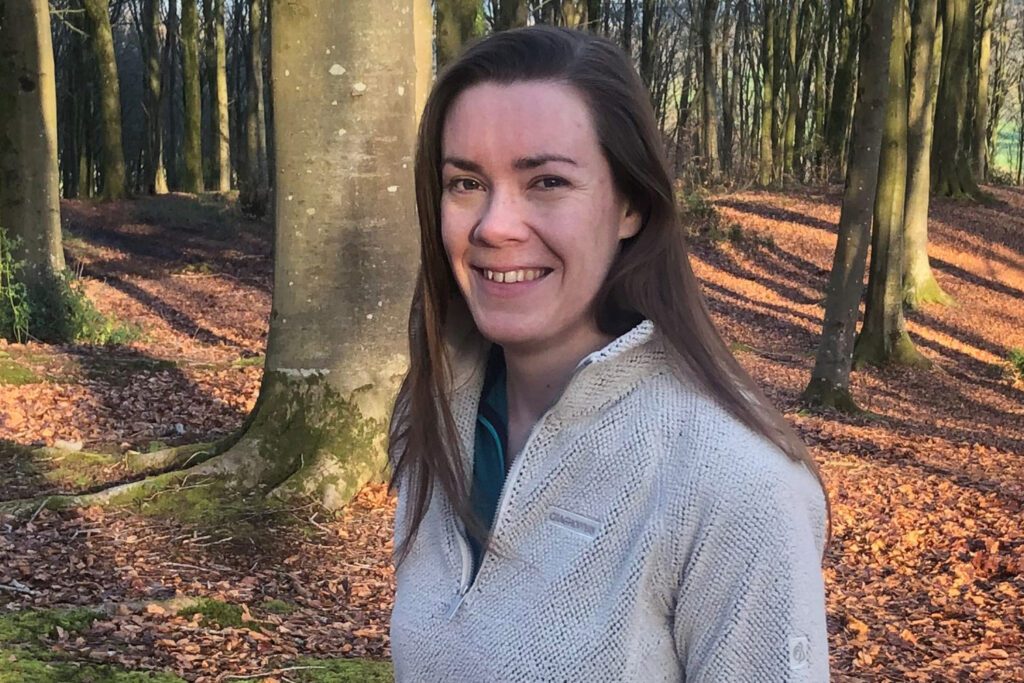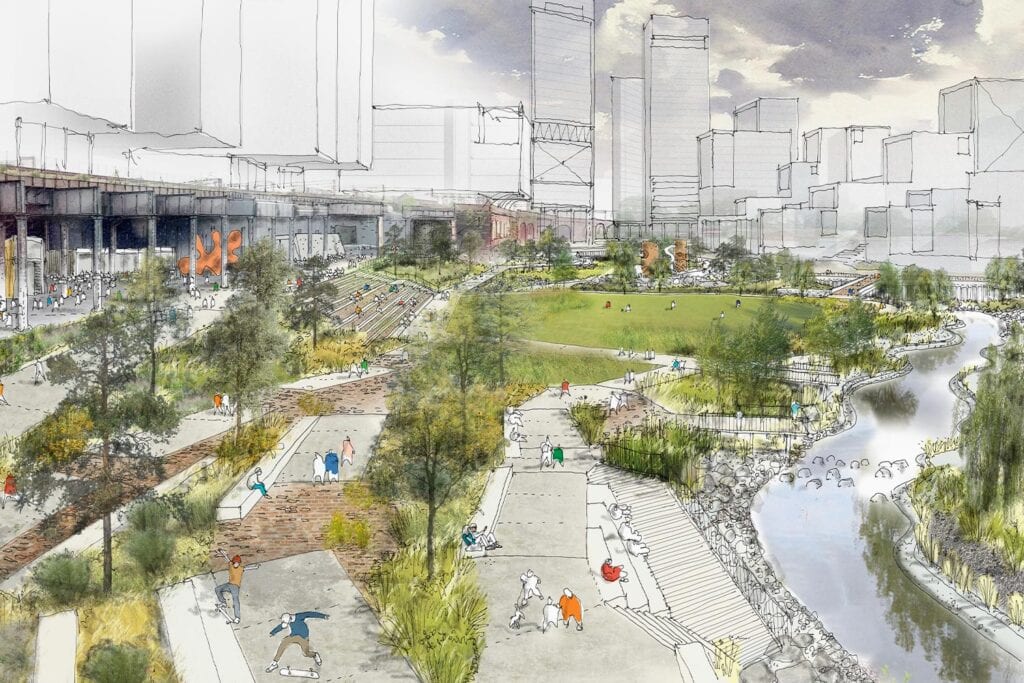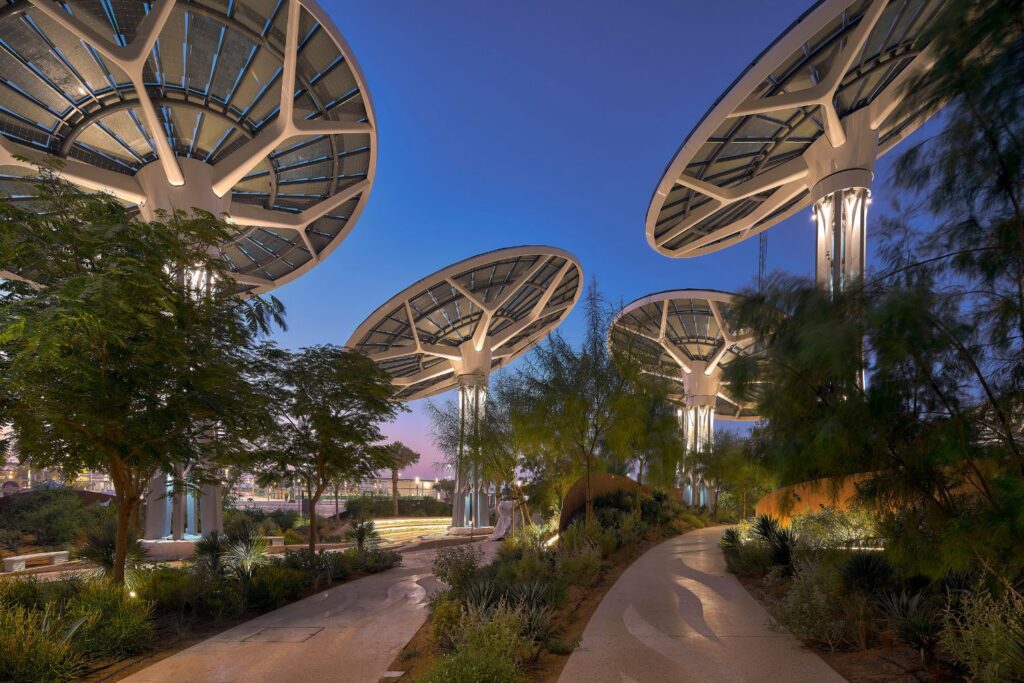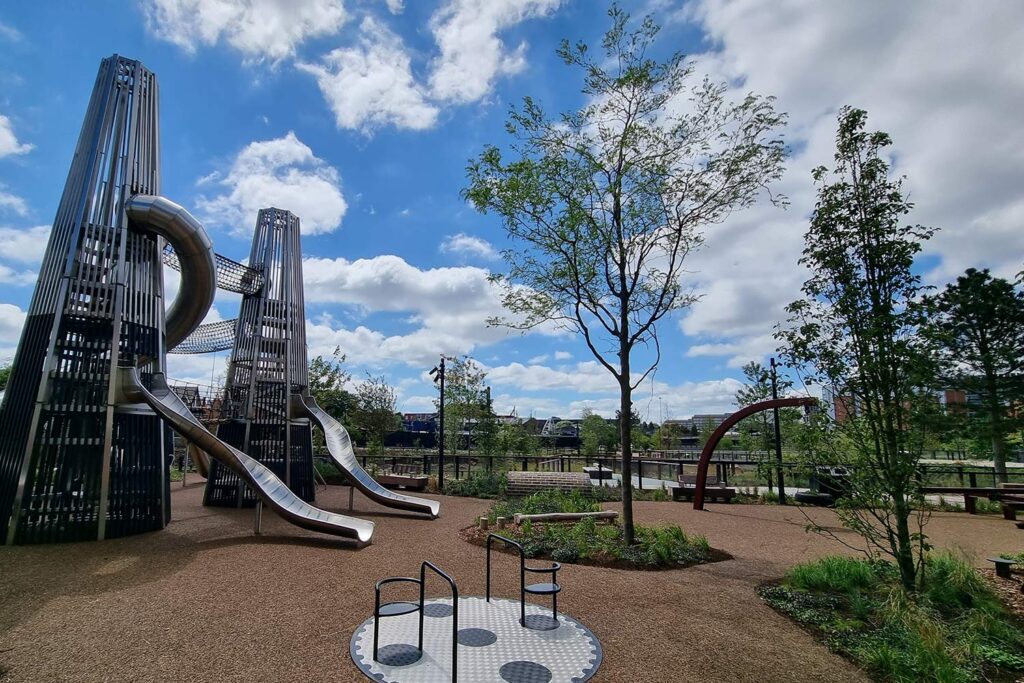Biodiversity and the built environment: the relationship between people and nature
The link that exists between humans and the natural world around them is one that has been tested to breaking point in recent years.
In this article, featuring a conversation with some of Buro Happold’s ecology and biodiversity management team, we explore that relationship and consider how those of us in the built environment are central in implementing biodiversity and ecology initiatives for the betterment of people, places and the planet.
Why is the relationship between people and nature important?
Biodiversity refers to the variety of life on earth: everything that exists within our environment. Every animal, plant, fungi and bacterium, their relationship with each other, and how they interact in intricate webs called ecosystems is what makes up earth’s biodiversity. This, of course, includes humans. We are not separate to it, nor does biodiversity only occur in the Brazilian rainforest or in rural idylls. It is a partnership we are all in, that underpins everything.
Without flourishing biodiversity, it is not possible for the economy on which our society relies to function. Agriculture relies directly on pollinators, while forests and wetlands assist in water management and carbon storage. Coral reefs, seagrass and mangroves protect coastlines and provide nurseries for fish stocks.
The human connection with nature also brings a wealth of wellbeing and health benefits. Proximity to nature and accessing green spaces (both in rural and urban environments) has been shown to support good mental health. It also provides a space to exercise for physical health.
There is now a recognised link between the benefits of biodiverse habitats and the outcomes for clients and our project teams.
Jenny Ross, associate ecologist at Buro Happold
Mónica Lozano Subiranas is an ecologist at Buro Happold. She said, “Biodiversity is the base of ecosystem services, so we depend on biodiversity on many levels, such as for food and medicine. Healthy biodiversity, flourishing habitats and green spaces provide lots of benefits to us all, including improved physical and mental health. We should also consider the positive social aspects, too; communities can benefit from an increase in green spaces, for example.”
Because the built environment has a huge impact on how we live our lives, biodiversity consideration in projects is critical in resetting a healthy relationship with the world around us. Considering wildlife, planting and green spaces in our work is no longer a ‘nice to have’ – it is an inherent part of how we deliver solutions to our clients.
What value do we provide to our clients by centring biodiversity?
It is important for clients to see the benefits of biodiversity and ecology considerations in their projects. ‘Nature-based solutions’ refers to an industry approach to actively using the natural world to provide solutions clients require. Nature-based solutions are not a ‘nice-to-have’ or a bolt-on, they provide the exacting results that clients need by using nature as a tool.
Jenny Ross said, “Implementing nature-based solutions and strategies for biodiversity in project work can support how the development is received by the site users, planning authorities and the client. In the past, it has sometimes been a challenge for clients when ecological interventions cost them money and they couldn’t see clear benefits in the end result.
“Now there is a more recognised link between the benefits that protecting and designing-in habitats for biodiversity can have with project goals, outcomes for clients, end users and our project teams. It can improve air quality and build in climate resilience, as well as provide many health advantages by increasing people’s access to nature.”
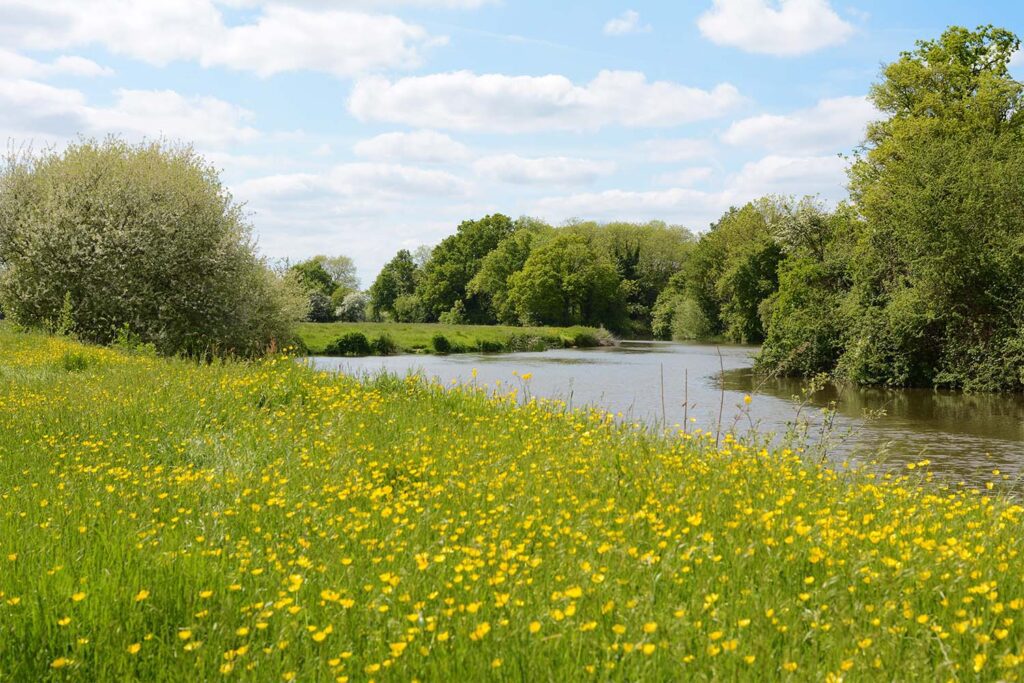
This isn’t easy work and there are challenges in centring nature in the solutions and outcomes offered to clients. Central to successful delivery is the collaboration and partnership between those responsible for development and implementation of projects.
Mónica Lozano Subiranas explains how positive outcomes for everyone are interconnected, whether they be consultant, client or user. “When you deliver a biodiversity solution, it is really difficult to implement something related to biodiversity when you are not collaborating with other disciplines. This is why at Buro Happold there is a lot of crossover with water, infrastructure, energy, structural engineering and sustainability teams. And when the client is willing to see how that can develop, it makes our job easier and improves outcomes for all.”
What is Buro Happold’s approach?
As expert ecology and biodiversity consultants in the built environment, we believe that ‘protecting and enhancing our natural environment is fundamental to delivering sustainable solutions for a greener, more resilient future.’ We consider the opportunities to create ‘biodiversity net gain’ (BNG) in all of our decisions. The aim of BNG is for land use change, including development, to leave the natural environment in a measurably better state than it was beforehand.
The Environment Act 2021 states that planning permissions granted in England (with a few exemptions) will have to deliver at least 10% BNG from November 2023. The BNG metric approach is one that our ecology and biodiversity management team have worked with on their projects since 2019. It is a quantifiable approach that assigns a value to habitats based on several different criteria, against which pre- and post- land use change proposals can be compared.
In order to tackle the climate and biodiversity crises (the two are completely linked – one wouldn’t exist without the other) we need consider the ways that we are connected to nature.
Mónica Lozano Subiranas, ecologist at Buro Happold
All work that our ecologists undertake, regardless of whether a BNG metric approach is being used, is underpinned by the mitigation hierarchy. This is an internationally recognised best practice approach, starting with considering the avoidance (or protection) of biodiversity, then going on to look at minimising and mitigatingany impacts that cannot be avoided, and finally offseting where impacts cannot be sufficiently mitigated on site.
Working through this hierarchy, starting from the first point, is important to reduce the impact to identified areas of ecological value at the beginning position of any project. Offsetting is, and always should be, viewed as a last resort once other options have been explored and exhausted.
The importance of nature for people and places, in action
As ecology and biodiversity consultants, Buro Happold advise at a strategic and large-scale level. Kent is the most populated local authority area in England and declared a climate and ecological emergency in 2019. Kent County Council (KCC), facing the extreme challenges of increasing pressures as a result of climate change, engaged us to work on a strategy of nature-based solutions for climate resilience.
This involved extensive mapping and review exercises, data analysis and stakeholder engagement to identify typical habitats for Kent that could support nature-based solutions for specific climate risks in the county such as summer droughts and winter flooding. Our work provided KCC with information to start to build its resilience around population challenges and to mitigate against the evolving risks of the climate emergency. This included identifying implementation within different timescales and detail on the potential funding streams for delivering the solutions.
Jenny Ross worked with KCC on this project and said, “We provided a nature-based solutions study for KCC to see what the county’s potential was for implementing biodiverse habitats to improve resilience in the face of climate change. They had identified extreme droughts in the summer, but also extreme floods in the winter – as well as a disparity in access to nature within their urban populations. With a nature-based solutions approach, context is important: we need to work from what the problem is foreseen to be, to ensure that the proposed solution is the most effective.”

The ecology and biodiversity management team also provide critical services in urban environments and on specific sites. Our work to regenerate Mayfield, a formerly derelict industrial site in central Manchester, has nature-based solutions at its heart. The development of the site included the creation of the first park in Manchester for over 100 years.
This ongoing regeneration project is an example of how even in an urban city-centre environment, it is possible to provide space that uses biodiversity to provide solutions, delivering a site that works for both client and users with tangible benefits for wildlife. The experience for users provides the many benefits that humans can get from increased exposure to green spaces and natural environments.
Jenny Ross said, “Mayfield demonstrates that even in an inner-city urban site, where there will be requirements to deliver housing, commercial space and parking, that space can also be given to nature. Mayfield is centred around the River Medlock and instead of maintaining the culverts, canalised walls and existing site levels, the project opened up the river, providing an open space for the people, and wildlife, of Manchester to enjoy. The re-naturalisation of this short stretch of the river allows people to connect with it while providing tangible ecological benefits for local species.”
Whatever the project, and wherever it is located, the target is always to achieve a nature-positive outcome, and ideally one which also has tangible additional benefits for end users. Biodiversity underpins our lives in so many ways, it is time that those within the built environment acknowledge and understand its importance and begin to take action to preserve, cultivate and protect it – to better support the future of people, places and the planet.
